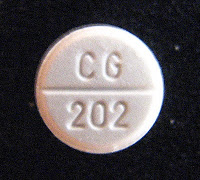Posted 27/01/2011 by Luke Buckmaster

A new study has shown that between 2002 and 2009, dispensing of stimulant medication in Australia—the majority of which is thought to be for the treatment of Attention Deficit Hyperactivity Disorder (ADHD)—has increased considerably.
The study,
Australian national trends in stimulant dispensing: 2002-09, published in the Early Online edition of the
Australian and New Zealand Journal of Psychiatry (ANZJP), used data from the Department of Health and Ageing to report trends in dispensed stimulant prescriptions between 2002 and 2009 by gender and age.
The drugs examined were dexamphetamine, methylphenidate (brand names: Ritalin and Concerta) and modafinil (brand name: Modavigil).
According to the study, between 2002 and 2009:
- there was an 87 per cent increase in stimulant dispensing in Australia
- dexamphetamine remained the most commonly dispensed stimulant, though prescriptions fell by 13 per cent
- the increase in stimulant dispensing was attributable to a 300 per cent increase in dispensed methylphenidate following inclusion of the short-acting preparations on the Pharmaceutical Benefits Scheme (PBS) from 2005 and longer acting preparations from 2007
- dispensing of stimulant prescriptions peaked at 10-14 years of age
- the use of stimulants was approximately five times greater in men than in women, although the Australian rate of prevalence of ADHD is 2.45 times greater in men than women.
In seeking to explain the 300 per cent increase in methylphenidate dispensing, the authors note that:
Although the most likely explanation for the increase ... was government subsidy [through the PBS], increased prescribing for stimulants has also been reported in North America and Europe. We conjecture that this may be due to a number of factors including studies showing the effectiveness of stimulants for ADHD treatment, increased public awareness of ADHD, societal changes (for example children living in smaller housing, greater expectations of children to remain at school) and the influence of marketing by pharmaceutical companies.
The authors also hypothesise that the peaking of stimulant prescription at 10-14 years of age reflects changing expectations placed upon children at school, arguing that the increase coincided with ‘increasing cognitive demands in the school environment and increasing expectations from parents, teachers and perhaps the students themselves’.
A point worth highlighting is that increases in dispensing of stimulants have tended to be greater in some Australian jurisdictions than in others. As the authors note, studies have reported increased use of stimulants in children and in adults in Western Australia (WA) and New South Wales (NSW), while other states such as South Australia have shown no consistent change.
In a 2004
Parliamentary Library study, I examined the differences between Federal electorates in dispensing of dexamphetamine through the PBS and found considerable variation both across and within jurisdictions, with WA electorates accounting for the top 14 electorates for prescription of ADHD medication in Australia. I also found that the number of PBS dexamphetamine prescriptions in Western Australia in 2003 was around three and a half times higher per 1000 population than the Australian average and more than 12 times higher than the jurisdiction with the lowest number of prescriptions, the Northern Territory.
The ANZJP study does not provide jurisdictional comparisons. However, such comparisons can be made using PBS data available from the
Medicare Australia website. The graph below shows all PBS prescriptions for stimulants (dexamphetamine, methylphenidate and modafinil) between 2002-03 and 2009-2010.
PBS prescriptions dispensed for stimulant medication, states and territories, 2002-03 to 2009-10